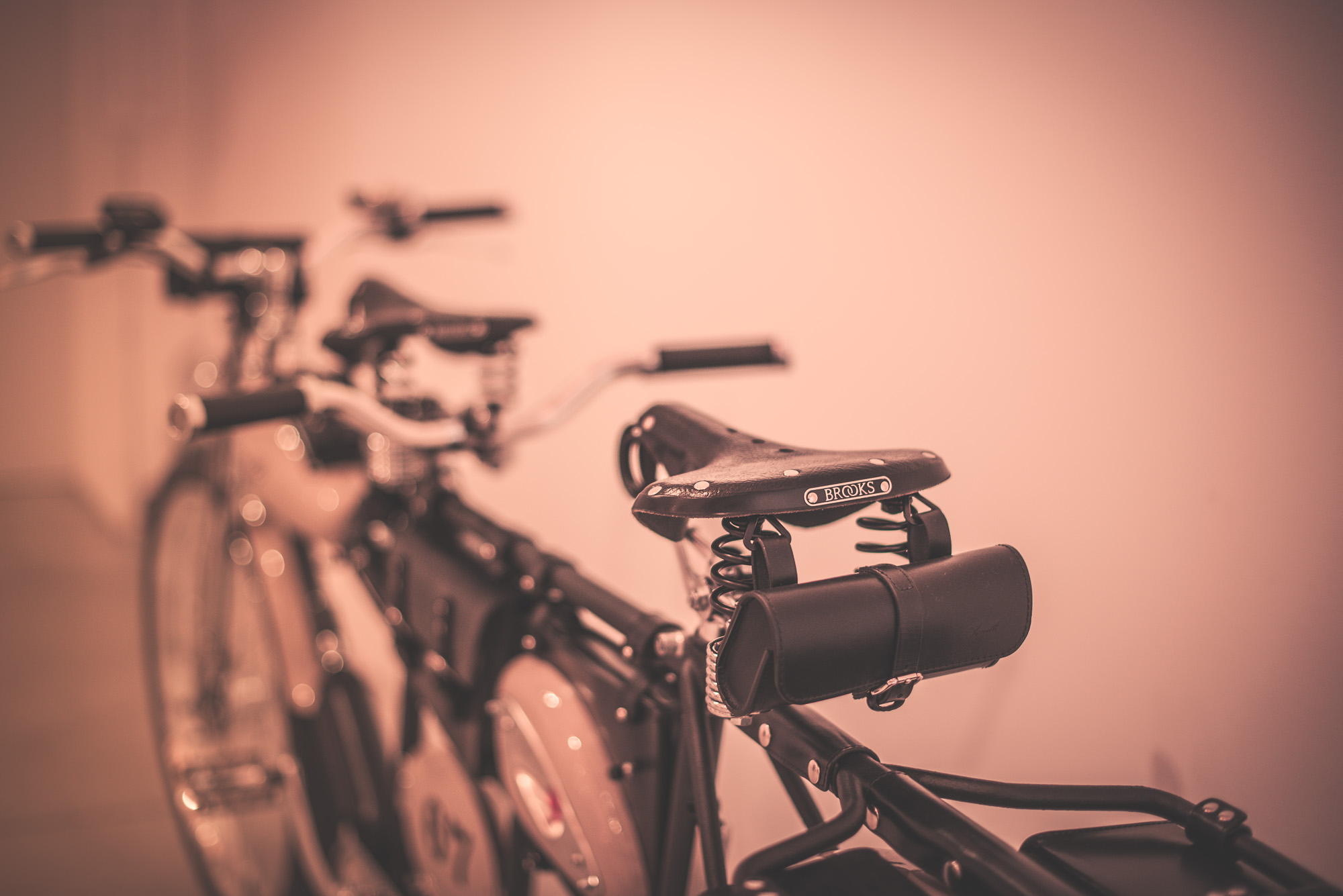Standard doesn’t exist. Attempting to mass produce an entirely handmade product that comes from artistic creativity, actually isn’t fair at all. In 2015, Luca Agnelli founded Agnelli Milano Bici in Abbiategrasso, a small town just outside Milan. In his workshop, he creates very special bicycles ― they feature bike components from the 1950s. Everything is, of course, made in Italy. We met up with him to find out what’s behind his bikes, in 60 Minutes.

Hi Luca, are we talking about bicycles or motorbikes?
These are electric bicycles, meaning that they have pedal assistance. There was a time when Italian craftsmanship was huge in the industry ― our bikes remind me of that period. Some of the most beautiful models were used everyday: Aquilotto Bianchi, Guzzino 65, Cucciolo Ducati and Ciao Piaggio. These were the last of that kind. Their function was extraordinary: a new sort of bike with a combustion engine.
How did you come up with this idea?
As a fan of electric mobility, I felt the need to play with the stuff that was around me. I started with my 30 year-old rusty bike and a scooter tank from the 1950s. It’s a sort of marriage between a tank and a bicycle frame. Imagination did the rest of the job after that.
Tell us about something about your creative process.
The thing I’m good at is trying to imagine what a bicycle looks like once completed. I never start from drawing a draft on a piece of paper. I just do it. Once my job is done, however, I always find myself happily surprised. Because it’s impossible to be sure about the finished product anyway. Where will your hands take you this time?

How are bicycles put together?
To me, the key is working with steel frames because they’re the most versatile material. The models you see are very diverse in terms of shape, but the main one is inspired from the 1980s-90s.
I choose the type of frame to match the tank. Then, I add the back fender and disc brakes. A standard doesn’t exist: every bike is unique. And you also need to consider personal taste.
And does the color stay original?
The study on coloring is very important. The color needs to respect the original product: it basically has to make sense with the overall design. I first strip the paint off the frame, to coat everything with powder, which is quite a delicate action. Regarding tanks, it’s much better to use normal paint. Trying to make both materials look similar is a real challenge.
The bikes are named with a serial number. Why is that?
There’s an identification number for each new bike. It corresponds with the bike number “x” of the “y” month of the current year. For instance, 01012017 is the first bike of January, and so on and so forth. Without a catalogue with bikes to replicate each season, I remember them by their numbers.

What do people say when they first discover them?
‘Only Italians could make something like that’ is the kind of compliment I hear the most. We’re both Italians, I know, but isn’t this a bit true?
What’s in your thoughts for the future?
My goal is to take Italian craftsmanship abroad. The challenge is to actually keep on doing it. At the moment, I’m working on sidecars ― in my workshop there’s a very particular model that I can’t talk about yet ― because it’s something no one has really talked about much. With my bikes I hope to move people; I’d like to make them think.








